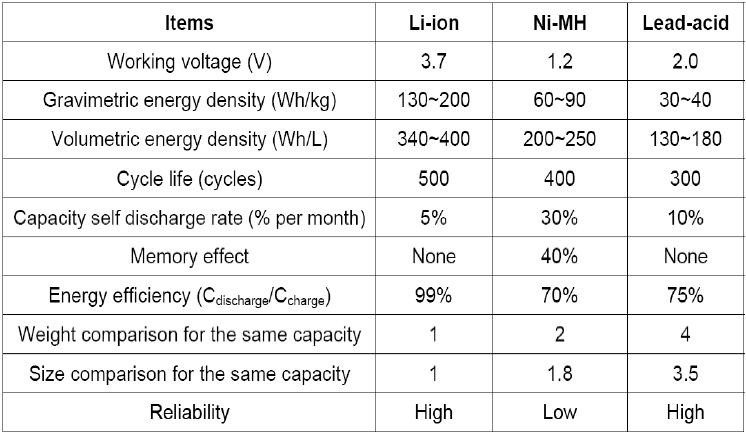Our Triple Hybrid Electric Vehicle will be powered using state of the art lithium-ion battery technology. Currently, the three most popular options are to use lead-acid, nickel metal hydride (Ni- MH) or lithium-ion batteries. Lead-acid battery is an outdated technology that has been used less and less for electric vehicle applications, due to its heavy weight, large size and non-environmental friendly materials such as lead and sulfuric acid. Ni-MH batteries have higher performance and lower cost than lead acid batteries. However, compared to lithium-ion, Ni-MH batteries have lower energy density and higher self discharge rates. Thus, lithium-ion batteries have become more and more popular due to its high energy density and long cycle life. Therefore, many electric vehicles, such as Tesla’s Roadster, use them. Nevertheless, lithium-ion technology does have their drawbacks. They are susceptible to overcharging and thus are prone to thermal runaway and explosions. Lithium-ion batteries are also very expensive compared the two other batteries (lead acid and Ni-MH). However, most of the safety problems with lithium-ion has been resolved and pries have dropped dramatically over the years. Thus, within these different technologies, lithium-ion battery is the best power solution for electric vehicle applications.

 instar@lists.berkeley.edu
instar@lists.berkeley.edu